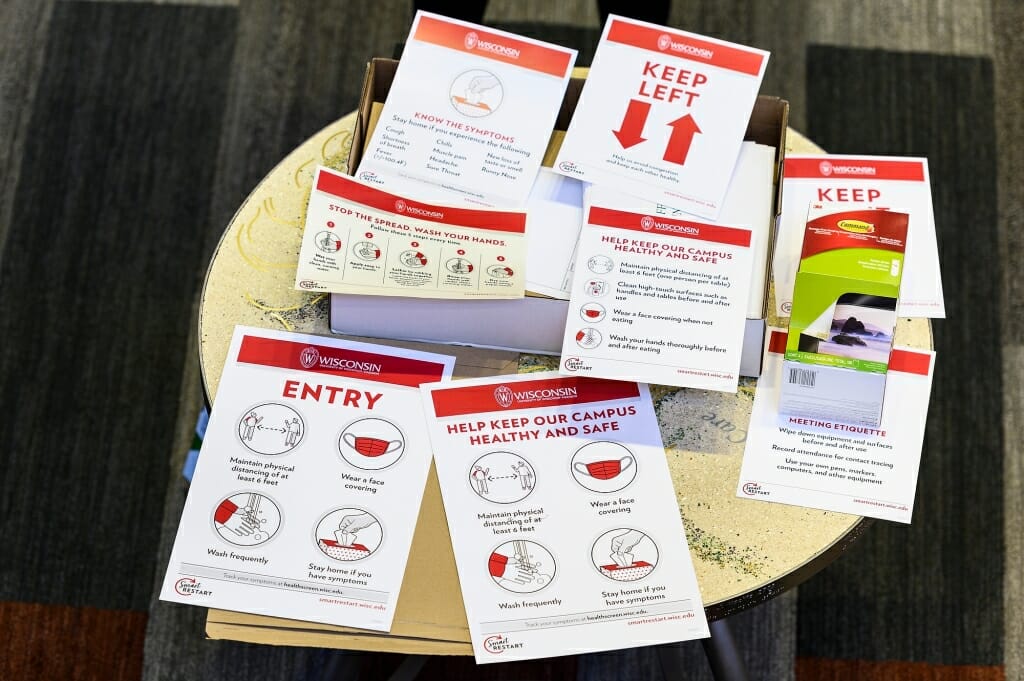How to communicate with students about COVID-19, according to science

COVID-19 communications to students should be transparent and consistent in their messaging, both about safety protocols and the health of campus, new research recommends. Photo: Jeff Miller
As universities look to welcome students back for another pandemic-era semester, they can turn to new insights from the National Academy of Sciences backed by research on how to effectively communicate about COVID-19.
The guidelines encourage campuses to emphasize social solidarity, work with students to craft and share messages, to avoid amplifying misinformation — even to debunk myths about the disease — among several other recommendations.

Dominique Brossard
A trio of communication experts including Dominique Brossard, a University of Wisconsin–Madison professor and chair of life sciences communication, developed the recommendations based on the science of communicating about risks to young adults and the experiences of universities during the fall semester. The researchers also worked with students at multiple universities to review the findings and ground them in real-life student experiences.
As part of normal development among young adults, “the positive consequences of social interaction are going to be weighted more heavily than the potential negative consequences of getting sick,” says Brossard. Although, she adds, “college students are all at different developmental stages. They’re not a monolithic population.”
Add in that the student population is primed to push boundaries and take certain risks, and this combination weakens the effectiveness of precautions rooted in reduced socialization.
Yet, research points to several strategies to overcome these obstacles. For example, the emphasis young adults place on the opinions and experiences of their peers makes trusted student messengers the ideal sources for sound COVID-19 information. For maximum effect, those students can also assist in crafting those messages.
“I would work with students as much as possible,” Brossard says, including athletes, fraternity and sorority leaders and other influential individuals on campus, not just student government. “You want spokespeople you can trust and who can be authentic about the messages they share.”
The report also recommends emphasizing the solidarity of the campus community, such as by invoking campus mascots and communal identity. Other suggestions include sharing the growing prevalence of positive behaviors, like the high percentage of students who wear masks every day, and not overstating how frequently rules are broken, which can normalize low expectations.
A lot of disinformation and confusion around COVID-19 has swirled around the internet since the pandemic began, and addressing myths and falsehoods is especially fraught, says Brossard. Research has shown that repeating false claims, even to fact check them, counterproductively lodges them in people’s minds.
“Why do we need to repeat something that may actually end up amplifying misinformation?” asks Brossard. “The right way to combat misinformation is just to state the right information.”
The report’s overarching recommendation to universities is to be transparent and consistent in their messaging, both about safety protocols and the health of campus.
“If you communicate the information you have, and it looks like you’re doing it as soon as you have it, that’s a really good thing,” she says.



